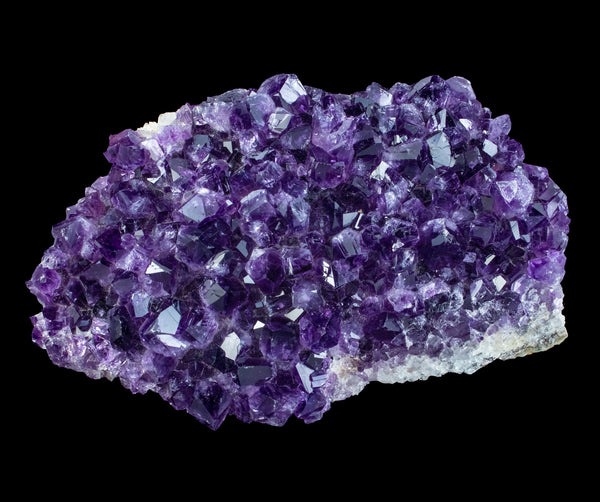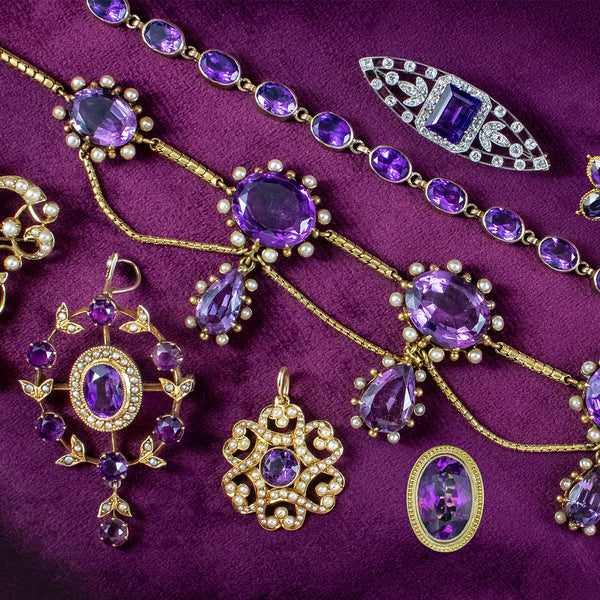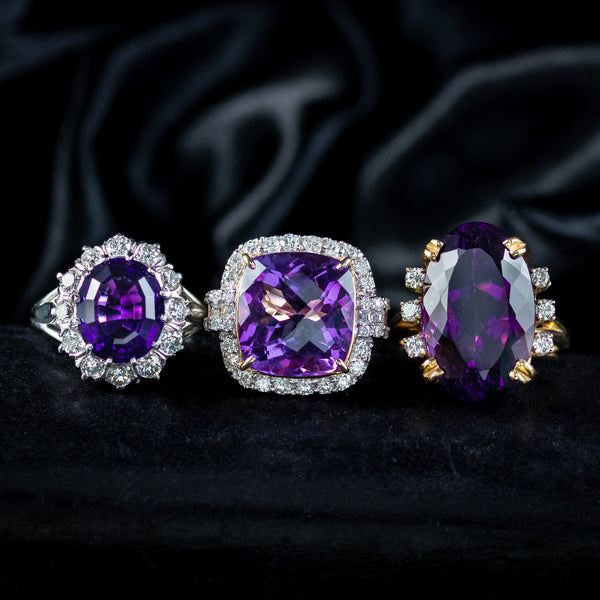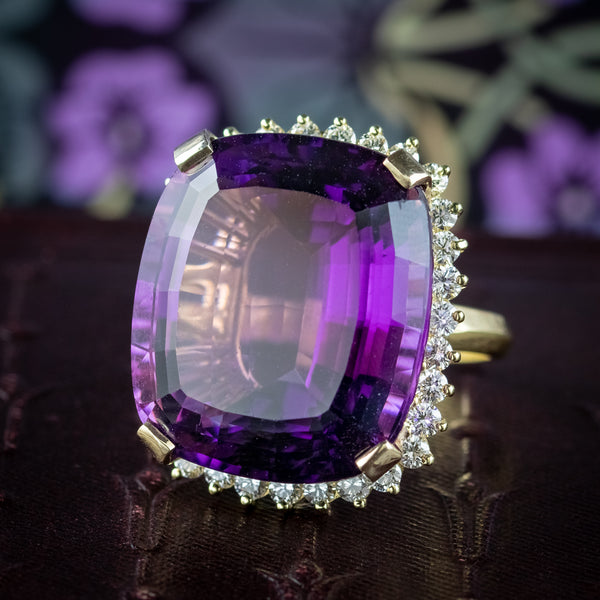Amethyst: February's Beautiful Birthstone

Amethyst is a purple variant of quartz which was once included in the five cardinal gemstones of the ancient world – five stones whose value surpassed all others, including the ruby, sapphire, diamond and emerald.
Antique jewellers treated the amethyst with the same care and attention as it’s illustrious compatriots, crafting some truly magnificent pieces of amethyst jewellery which come in an astounding variety of forms.
In 1979 vast reserves of amethyst were discovered deep beneath Brazil. As this made the precious stone much more common its value decreased. This means that modern amethyst jewellery is often paired with less precious metals, and less care is taken with the specimens included. Antique amethyst jewellery retains a degree of respect for this beautiful stone which is sadly lacking in contemporary gem craft.
What Does Amethyst Mean?

The word amethyst is derived from the Greek word “amethustos” which means “not drunk” as it was once believed to protect the bearer from the effects of intoxication. Wine goblets were often carved from it for this reason.
The myth behind this stems from a story involving the Greek god of wine Dionysus, later named Bacchus by the Romans. The story takes many forms, but our favourite retelling says that Dionysus was once insulted by a mortal man and swore to inflict a great retribution on creation. He created a legion of fierce tigers and unleashed them upon the earth with instruction to kill the first person they saw. The tigers first set their eyes upon a woman of such extraordinary beauty that the wilderness goddess Artemis felt compelled to intervene and transformed her into a clear stone to protect her from the tigers’ claws.
When Dionysus saw that such a beautiful creature had been rendered into stone he wept, and it was his tears, stained with red wine, which turned the clear stone purple and created the amethyst.
Colour and Clarity

All amethyst is purple, but it can vary tremendously from one stone to another. Historically the most valuable form was a deeper colour originally found in Siberia.
Whilst most gem-quality amethyst is translucent more common forms contain pale inclusions or host rock, which makes them cloudy and patterned in interesting ways. Such stones are not generally included in jewellery, but may be polished for use as decorative pieces.
When amethyst forms it does so in crystals, and larger arrays of such crystal formations may be pulled from the earth and preserved exactly as they are as centrepieces and ornaments.

Amethyst is sensitive to heat and its colour can change when heat is applied. Natural heat changes occasionally yield a pink variety, but extreme heat changes the purple hue to yellow or orange. This honey coloured stone is named citrine and was highly valued during the Victorian era as it was a favourite of queen Victoria herself.
When amethyst is irregularly heated it may present in bands of traditional amethyst and citrine which show a gradient of colour from purple to yellow. These stones are named ametrine. They are rarely used in jewellery, but can be beautiful in their own right and are prized by gem enthusiasts
Like many gemstones the colour of amethyst can be changed with radiation. As with sapphire radiation darkens the colour. As knowledge of radiation only occurred after amethyst became more common this treatment is extremely rare.
Amethyst Meaning

Amethyst is the birthstone for the month of February, and is often given as a gift to those with a birthday in that month. It is also associated with the 6th wedding anniversary and can make a touching gift to celebrate this important milestone.
Amethyst is also an important stone in the jewellery which was created to represent women’s rights and the suffragette movement. The movement was defined by the goal to “give women votes”, and the first letters of each of these words was represented by a colour; green, white and violet. Whilst there are many green and white stones amethyst is really the only violet stone of note, so most pieces of suffragette jewellery contain amethyst.

At Laurelle Antique Jewellery we have many years of experience in finding and caring for vintage and antique amethyst jewellery. Our team of experts have discovered some truly remarkable pieces over the years. You can view our full collection here.
If you have any questions about the antique amethyst engagement rings or other pieces which we sell feel free to get in touch on England: 0333 700 4500 or send us an email via enquiries@antiquejewellerygroup.com. Our team is always happy to help!



